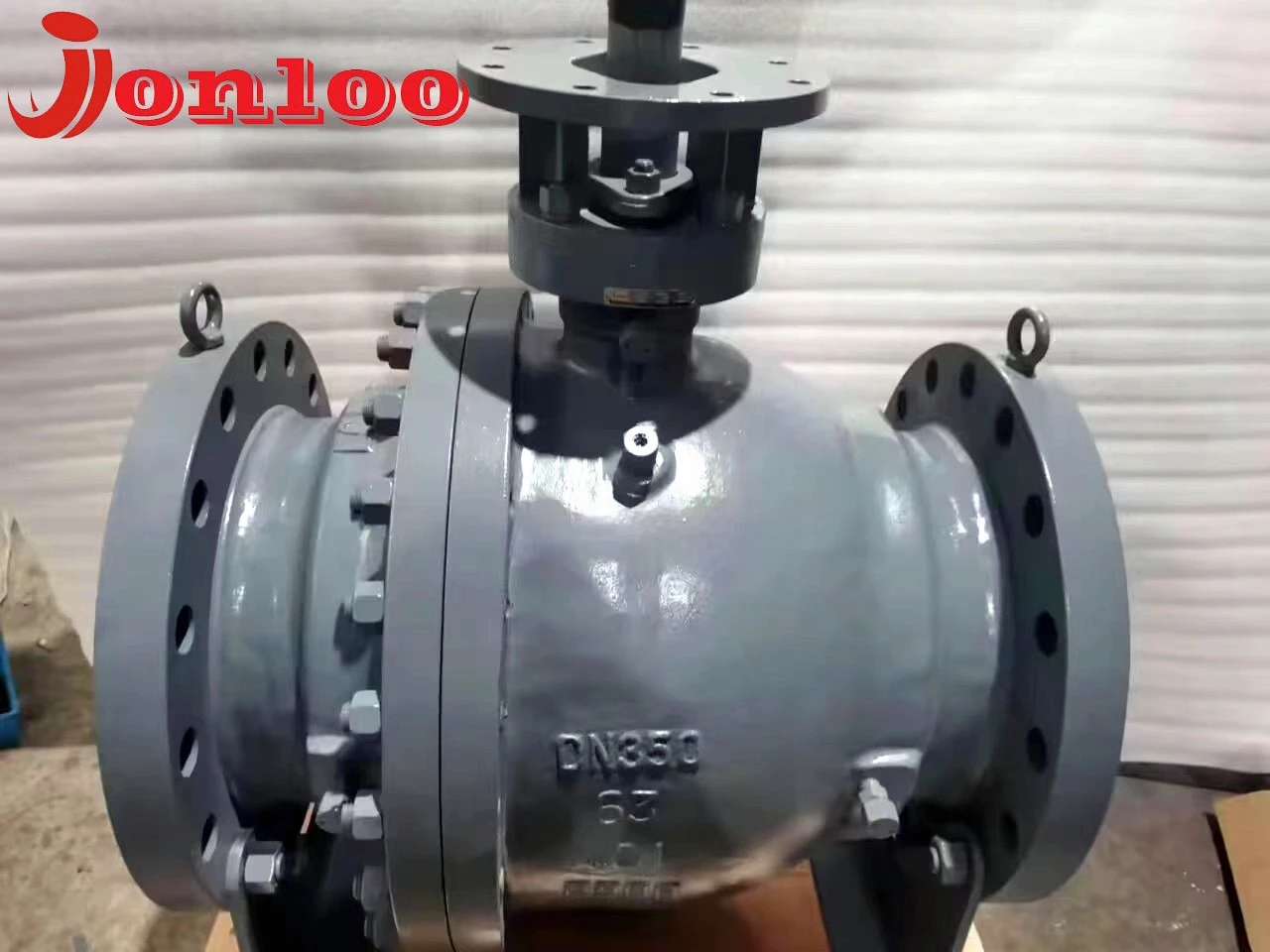For a number of reasons, ball valves are chosen over other types of valves in corrosive environments.
Simple design: The ball valve reduces the amount of corrosion-prone components. Compared to other valve types like globe valves or gate valves, ball valves have fewer internal parts, which implies that there are less surfaces that the corrosive environment can damage.
Tight shut-off: The fluid flow via a ball valve is managed by the rotation of a ball-shaped disc. A tight seal is created between the ball and the valve body when the ball is closed, stopping leaks. Ball valves are perfect for usage in situations where even a small leak can cause serious issues because of their nature.
Causes of corrosion in ball valves
Ball valve corrosion can be brought on by a number of things, including as exposure to strong chemicals, high temperatures, and high-pressure situations. Ball valves may corrode for a variety of reasons.
Environmental exposure: Certain materials, including cast iron or carbon steel, can cause corrosion in ball valves when they come into contact with acidic or seawater-containing fluids. Corrosion can also develop when the valve comes into touch with substances like acids, alkalis, and chlorine.
Galvanic corrosion: When two different metals come into touch with one another when an electrolyte is present, galvanic corrosion takes place. This can happen with ball valves when the body, ball, and stem are made of different materials. The passage of electrical current may result in corrosion if these materials have dissimilar electrochemical characteristics.
Erosion-corrosion: Chemical attack and mechanical wear are the causes of erosion-corrosion. Ball valves exposed to abrasive fluids or high-velocity flows may experience this. The fluid's mechanical motion has the potential to dissolve the valve surface's protective oxide coating, exposing the metal underneath to corrosion.
Microbial-induced corrosion (MIC): Microorganisms that can colonize the surface of ball valves, such as bacteria and fungi, are the source of MIC. The production of acids and other corrosive chemicals by these bacteria has the potential to assault the metal surface and cause corrosion.
Ball valve selection for corrosive situations
Ball valves can be used with corrosive media in a variety of ways in industrial settings.
Depending on the application, materials including titanium, stainless steel, Hastelloy, and other alloys may be employed. These materials can tolerate exposure to hostile chemicals and conditions and are well-known for their corrosion-resistant qualities.
Although grade 304 stainless steel is appropriate for slightly corrosive conditions, grade 316 stainless steel is advised for extremely corrosive settings. Learn how to decide between stainless steel 316 and 304.
Although PVC and CPVC plastic ball valves are very corrosion-resistant, they might not be appropriate for high-temperature applications. Their maximum temperature rating is normally 60 °C.
In corrosive settings, soft-seated valves made of durable elastomeric materials like FKM, FFKM, or EPDM can offer superior sealing performance.
The impact of temperature, pressure, and concentration
Selecting the appropriate material can be challenging because different substances and environments have varying effects on different materials. Sulfuric acid, for instance, can corrode steel at low quantities but can form a protective layer at high amounts. Chlorine is not highly corrosive when dry but can be very corrosive when humid. Hydrogen only corrodes steel under high temperatures and pressures. Not simply corrosion protection but also cost, availability, and resistance to pressure and temperature are important considerations when selecting the proper material for the valve body. The compatibility of typical ball valve materials with common corrosive fluids is displayed in Table 1. For information on the compatibility of various valve materials with more corrosive environments, see our chemical compatibility chart.
Material compatibility of common corrosive media is shown in Table 1.
| Media | Ball valve material information |
| Sulfuric acid |
|
| Hydrochloric acid |
|
| Nitric acid |
|
| Chlorine |
|
| Ammonia |
|
| Alcohols, Ketones, Esters, Ethers |
|
Design
Reduced crevices: Ball valves intended for use in corrosive environments are made with a design that reduces the possibility of corrosion by, for example, having fewer dead spaces or crevices where corrosive media can gather. Additionally, a reduced port ball valve could be more vulnerable to buildup and corrosion than a full port ball valve, which can prevent the accumulation of corrosive media.
Double sealing system: To add an additional degree of defense against corrosive media, an anti-corrosive ball valve may be equipped with a double sealing system. To stop the corrosive media from entering the valve and harming internal components, this system usually has two sets of seals.
Stem protector: A ball valve's stem is an important part that is prone to corrosion. A stem protector that protects the stem from exposure to corrosive media may be included in anti-corrosive ball valves. Using coatings or corrosion-resistant materials can help achieve this. By erecting a barrier between the metal and the corrosive media, coatings lower the chance of corrosion by preventing direct contact. Teflon, epoxy, and other polymer coatings are a few examples of coatings. To prevent corrosion and increase the valve's lifespan, the stem and ball can be coated with PTFE or another corrosion-resistant substance. Corrosion can be avoided by making sure valves are installed and maintained correctly. Using the right gaskets and sealing materials, as well as making sure the valve is positioned and fastened correctly, are all part of a professional installation. Cleaning and checking the valve for corrosion are part of routine maintenance.
FAQs
Which materials are advised for use with ball valves in corrosive conditions?
Ball valves are frequently made of plastic, brass, and stainless steel in corrosive conditions. Considering the particular corrosive media, the material choice should have a high level of corrosion resistance.
What are some ways to lessen the effects of corrosion on my ball valve?
An effective ball valve can be made less susceptible to corrosion by using coatings and platings, proper installation, and routine maintenance. Reducing corrosion can also be achieved by choosing the appropriate ball valve.

